Stone Age classroom
- Anne MacLaurin
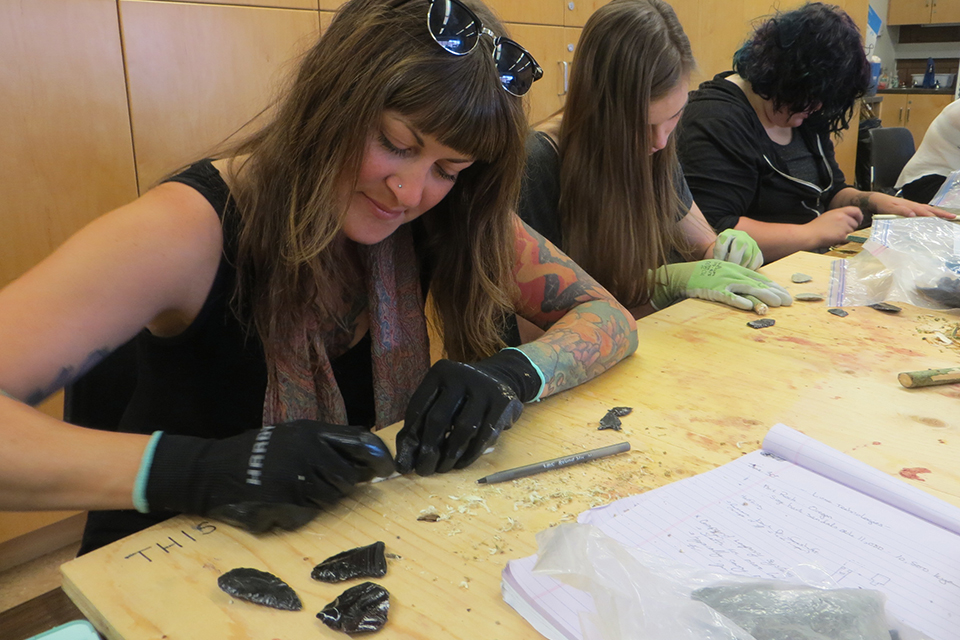
In July, a group of 17 UVic anthropology students went back to the Stone Age working with bone, shell, obsidian, stone and wood to make hand tools and spear-like weapons that are thrown with a spear thrower, known as the atlatl.
The “Living Technologies” ANTH 315 course exposes students to flintknapping, percussion and pressure techniques, stone pecking and grinding—all essential to making stone tools and spear points.
Valuable hands-on learning
“I love teaching the stone tools course,” says sessional instructor Dan Stueber. “It’s so valuable for students that are planning to be archaeologists to create a stone tool and see the flakes that break off using prehistoric percussion and pressure techniques.”
Stueber, based in Oregon, travels up to Victoria to teach the course most summers. He has been a flintknapper and practitioner of primitive technologies for over 30 years while also teaching courses in ground stone and lithic technology in the Pacific Northwest. Stueber played a key role in a world-first discovery on early use of Stone Age tools last August, along with UVic paleoanthropologist April Nowell.
What is a flake?
For fourth-year student Holly Miller-Stroes, the hands-on learning was invaluable. In the classroom she looked at flakes in diagrams but to the untrained eye, a flake just looks like a rock. It wasn’t until Stueber’s class that she could recognize the attributes of a flake.
“In Dan’s class, I picked up a hammer stone and struck a piece of obsidian with the intent of making a tool. A flake came off, and for the first time when I looked at it I could point to it and say ‘there’s the bulb of force, that’s the platform that was made where my hammer stuck, those are the compression rings radiating out from the force of my strike,’” says Miller-Stroes.
Outdoor classroom
In his outdoor classroom, Stueber enthusiastically instructs students on percussion techniques, flintknapping and spear throwing. Hands-on learning is essential to anthropology, says Stueber. Recreating stone tools and activities from as far back as 2.7 million years ago deepens our understanding and appreciation of our ancestor’s intelligence and ingenuity.
“In my class students will also learn how to use an atlatl,” says Stueber, “an ancient weapon that predated the bow and arrow.”
The atlatl is a stick with a handle on one end and a socket, or small hook, on the other that holds a light spear. Stone Age people used the atlatl to hunt mammoths in prehistoric North America, but it was first used about 30,000 years ago by Homo sapiens of the Upper Paleolithic era in Europe.
On the last day of class, Stueber took his students to an open area where they all practiced throwing spears using an atlatl. Hitting a target five meters away takes skill and precision—something the group of anthropology students quickly learned to appreciate about their Stone Age ancestors.
Learn more about field courses offered through the Department of Anthropology.
Photos
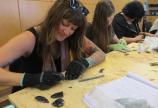
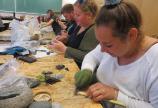
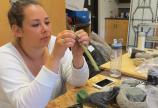
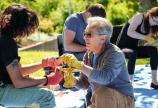
In this story
Keywords: stone age, anthropology, student life
People: Alisha Gauvreau, Emma Scott, Eva Gribbon, Cal Abbott, Dan Stueber
